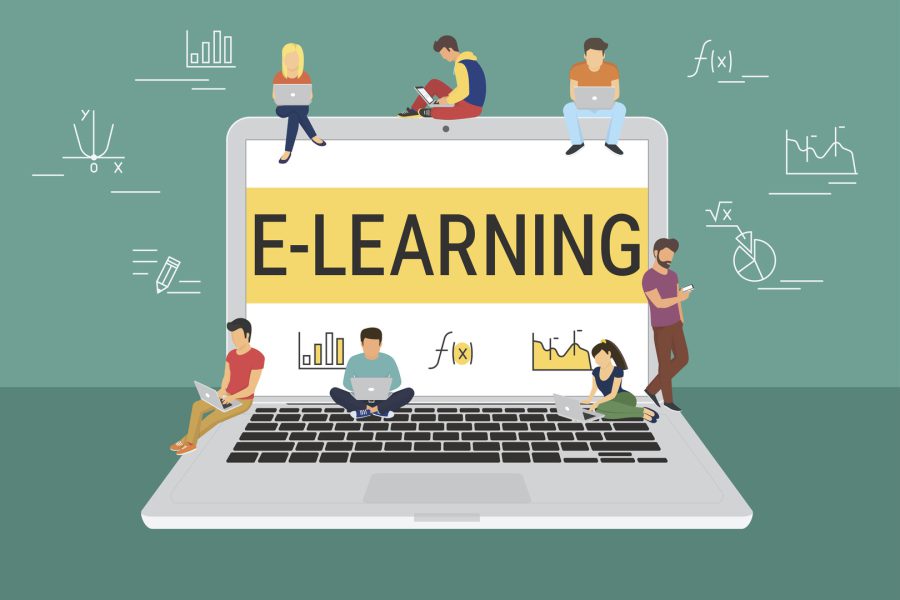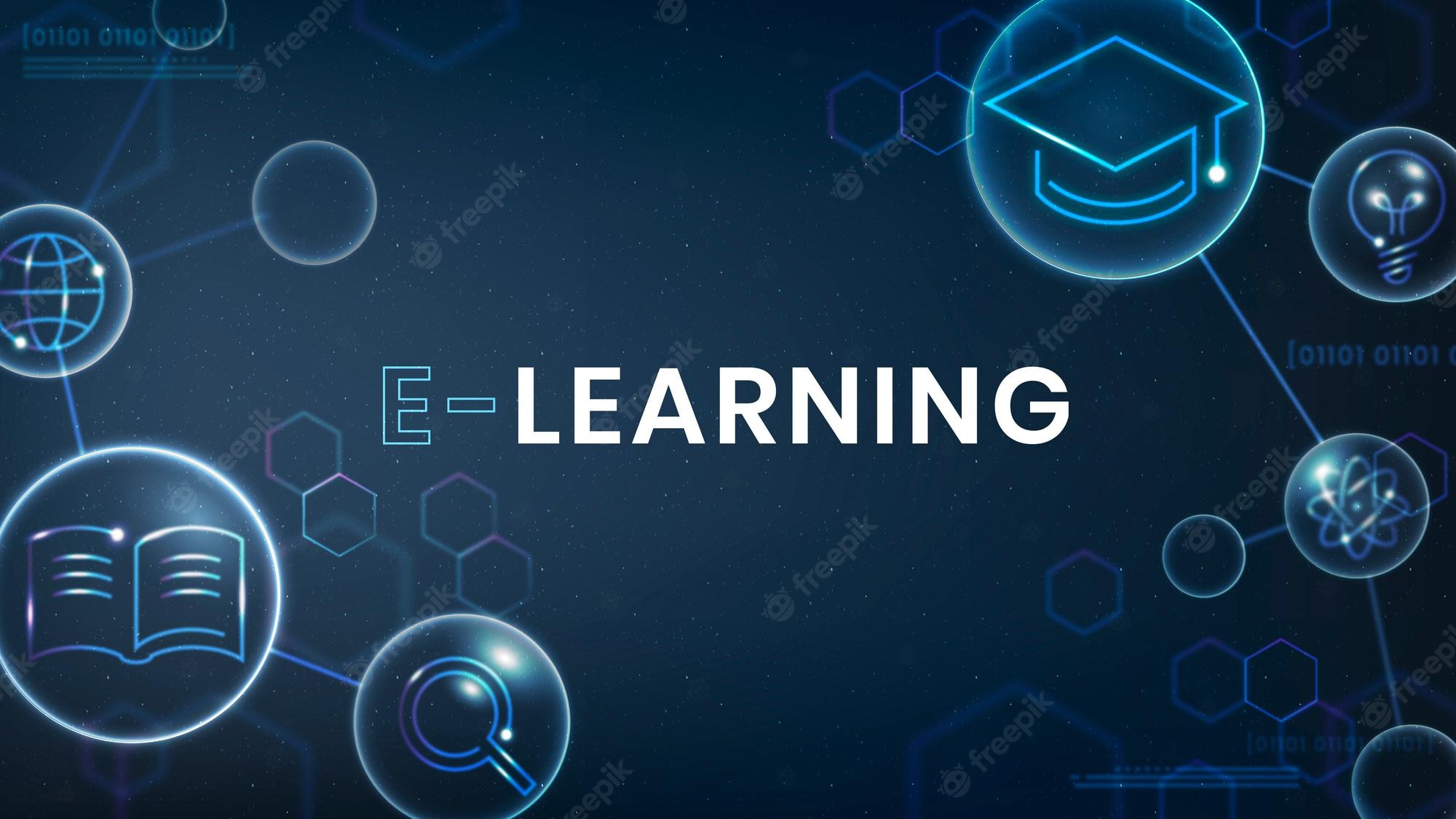There are lots of benefits of e-learning, but there are also a few drawbacks. The main benefit of e-learning is that it allows students to learn on their own time. It’s much cheaper than traditional education methods.
However, the downside is that you don’t get any feedback when you’re learning. So, if you do something wrong, you won’t know until you’ve finished your assignment. This means you need to try hard not to fail your assignments.
Another disadvantage of e-learning is that you cannot interact with people who share your interests. In other words, you can only communicate with those in your class, so you may miss out on valuable connections and friendships.
In addition, it’s harder for students to get into the mindset needed to learn from a text book. This is because they are used to studying face to face with other people. They might feel intimidated by the amount of work required to complete an online course. And finally, e-learning doesn’t allow teachers to observe student behavior.
What Is E-learning?
Learning online is becoming more popular than ever before. There are so many different ways that you can learn from the comfort of your own home. You don’t have to worry about finding a classroom, sitting through lectures, or being forced to take notes anymore. All you need to do is log onto one of the numerous websites available on the internet.
But, how does it work? How exactly are these sites able to teach you everything you need to know? And, what can they offer you that traditional methods cannot? Let’s explore.
What Is Online Learning?
Online learning isn’t anything new. In fact, it was used as early as the 1960s by the military. However, since then, it has become a much more common form of education.
In most cases, you’ll be using a computer to access your lessons. Some people prefer to use their laptop or desktop, while others will opt for the convenience of an iPad or Android tablet. Regardless of what device you choose, you’ll still need to connect to the internet in order to get started.
You may also want to consider investing in some headphones or earbuds. This way, you won’t disturb your family members when you’re trying to study.
Advantages of E-learning for Education?
Nowadays, more and more students prefer to learn by using electronic devices like laptops and tablets instead of traditional textbooks. If you want to know why, read on to discover the advantages of e-learning for education!
First, let’s start with the disadvantages. The main disadvantage of paper books is that they’re heavy. This makes them difficult to carry around, especially when you have a lot of reading to do.
Another problem with physical texts is that they take up space on your shelves and in your drawers. As a result, you may end up spending a lot of money on storage solutions.
With digital content, however, there are no such problems. You can save it easily onto your computer or smartphone, and you don’t need to worry about how much room you’ll use. Also, you won’t be wasting any space on your shelf or in your drawer.
Finally, the biggest advantage of e-learning is that you can access the information at anytime. No matter where you go, you always have internet connectivity.
Top 5 disadvantages of eLearning in detail:
1. eLearning relies on digital access and know how
Attempts to provide education during the pandemic exposed a serious drawback of eLearning – the digital divide. This is the gap between those with access to devices, connectivity and technical knowledge, and those without.
According to the World Economic Forum (WEF) billions of people around the world remain without the universal human right to internet access. This is particularly the case in poorer, less developed nations. But even in the USA 30 million Americans living in remote, rural communities struggle to access eLearning and other benefits of the digital age.
And the OECD estimates that even in nations with good internet access, levels of computer literacy can be as low as 54%. Plus, this rate increases significantly amongst the over 60s.
The digital divide is a problem for everyone: adults trying to improve their prospects, school and university students, teachers striving to get to grips with ever changing technology, and all education providers.
Whilst this inequality exists, eLearning will not be able to benefit all citizens.
Solutions
The digital divide is an intractable problem to deal with as it relates to larger inequalities in society. But some suggestions to address this disadvantage of eLearning include:
- Public-private collaboration and investment in 5G technology
- The Alliance for Affordable Internet (A4AI) which is a project led by an international coalition of governments and private enterprises to lower the cost of broadband in specific areas in Africa, Asia and Latin America.
- International initiatives to promote digital literacy such as the EU framework for digital competence. This has been used to inform teacher education, curriculum development, student assessment and generally boost computer literacy rates.
- Innovative partnerships such as that between LinkedIn Learning and thousands of global libraries to provide free online courses for library cardholders.
2. eLearning lacks meaningful feedback
In person teaching allows teachers to provide effective feedback.
A good teacher can just scan the facial expressions and body language of students in a room to judge how well they are responding to new learning. He or she can then make adjustments, take a step back, engage all the senses of the learners, explain things using different examples or provide personalised feedback in a face to face chat.
And when written assessments are completed, traditional education allows for personalized feedback as the assessor has personal knowledge of the student, their strengths and weaknesses, and what they need to focus on to make progress.
Without meaningful feedback and interaction, not only does online learning suffer, but teachers may become less responsive and reflective in their approach.
This is why online classes are not always effective.
Online education providers are still wrestling with the best way to deal with this disadvantage of eLearning. Nevertheless, moves are being made to address the situation.
Solutions
Some of the moves to redress this con of online classes include
- The use of peer feedback systems whereby groups of students in the same cohort of learners collaborate to support each other
- Online ‘office hours’ enabling video chats between students and teachers
- Online communities, forums and chat rooms
- Live Q&A sessions
3. eLearning relies on the self discipline of the learner
One of the greatest benefits of eLearning is its flexibility which allows learners to fit it into their own schedules.
However, this flexibility can also be a reason why online courses are not efffective.
Without face to face communication or meaningful feedback, learners may experience a lack of pressure, put off engaging with their studies, or abandon them completely.
Students learning at home can be easily distracted without the factors at play in an in person setting that keep them on track and on task.
In fact research by MIT shows that the average completion rates for Massive Open Online Courses can be as little as 3%.
Solutions
- Cohort based learning is beginning to address this negative of eLearning by creating online communities of students who start and complete a course according to a set schedule and time frame. This provides a structure and timeline for students to commit to and the support of other students at similar stages in their learning.
- Where learning is recorded and the student is free to dip in and out as they choose, many providers send email reminders to keep students on top of their learning

4. eLearning can be socially isolating
This is a major disadvantage of online classes if they take the form of pre-recorded sessions which students access individually at a time of their choosing. Whilst this kind of learning offers great flexibility, students taking part in it can feel disconnected and lack the motivation to complete their studies. We found this to be the case in our research on eLearning during the pandemic.
We’re hard wired to seek out human interaction. And learning just works better if it happens when others are present.
All our key learning in early life is achieved by interaction with others. As adults, collaborating with peers exposes us to different ways of looking at things and makes new learning more meaningful and ‘sticky’.
Not only that, but our desire to feel valued by others motivates us to engage more with what we are learning and give us the confidence to try new things.
Solutions
The eLearning industry understands this drawback of eLearning well and is beginning to address this in a number of ways including to:
- Start recorded learning sessions on scheduled dates so that students are learning with a cohort of peers with whom they can communicate. Usually through forums, chat rooms and community groups (known as cohort learning).
- Blend in live sessions using conferencing software such as Zoom. This allows for real time interaction and group sessions in ‘break out’ rooms.
5. E Learning is difficult to do well
One major con of eLearning is that it’s difficult to do well. Not all eLearning courses have been implemented carefully and in a fully integrated way.
Beyond all the technical aspects – kit, production values, graphics, etc – is the fact that many providers are not trained educators and so are not always clear about learning outcomes – what they expect students to know, understand or be able to do as a result of taking their course.
Some go for a ‘one size fits all’ approach which is rarely a recipe for success. Others lack a community or forum for learners to provide feedback, ask questions and communicate with their peers and instructors because of the difficulties associated with doing this.
Most lack effective methods of assessment, to both gauge learning outcomes and the impact of the e-learning program that has been devised.
Solutions
- Educational institutions can make use of an Learning Management System which enables them to enrol users, provide analytics for tracking courses as well as actually create courses.
- Individual online education providers can use authoring tools such as Absorb or Elucidat. These are tools that help you create and launch an e-learning course.
- Open online course providers such as Udemy or Skillshare allow individuals to offer courses on their platforms.
- Take the time to curate your program and always remember; the learning objective and outcomes are key
- If you are seeking an eLearning course, do your homework and use sites like Learnopoly which review courses in detail.

